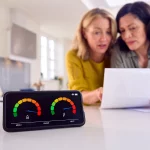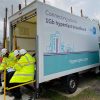Broadway to Harness Low Voltage Poles for UK Broadband Rollout UPDATE

Rural broadband developer Broadway Partners (aka – ISP Broadway Broadband) has today reached an interesting new agreement that will enable them to harness Western Power‘s low voltage poles. The deal will be used to support their on-going deployment of gigabit-capable “full fibre” (FTTP) infrastructure to homes.
At present the operator has already completed a limited deployment of Fibre-to-the-Premises (FTTP) infrastructure, as well as several different Fixed Wireless Access (FWA) networks across the United Kingdom, albeit largely focused upon rural parts of Wales and Scotland. Going forwards they also have an aim to extend their “gigabit-capable … fibre” network to cover 500,000 homes and businesses by the end of 2022.
As part of this they’re already making some use of Openreach’s (BT) existing cable ducts and poles to run their own fibre (Physical Infrastructure Access) and, after today’s agreement, they’ll be able to harness Western Power’s low voltage electricity poles for a similar purpose.
Advertisement
The announcement isn’t specific about the details, although generally speaking a low voltage line is usually taken to mean something akin to the wires that run directly to houses (240v+), which may also include some wooden poles (although some of those poles may be more in the medium voltage range). By comparison high voltage often reflects those huge steel towers you see (unless underground).
Michael Armitage, CEO of Broadway Partners, said:
“We have been delivering broadband connectivity to digitally disadvantaged areas in Wales and Scotland since our first commercial operations launched in 2016. We continue to roll out Fibre across southwest Wales and have just reached an agreement to use Western Power’s low voltage poles in addition to our existing Openreach PIA (Physical Infrastructure Access), which means we can now roll out these services faster than ever.
We have already started to unbundle local exchanges in Chepstow, Abergavenny, Monmouth and Pontypool, with more to follow as we continue to roll out Fibre across Monmouthshire. Broadway Partners is committed to ‘connecting the unconnected’ and this is just another step toward our goal in ensuring everyone receives fast and reliable broadband services, regardless of where they choose to live and work.”
Sharing broadband infrastructure with electricity networks has been done before, although it often requires special consideration in order to become truly cost effective, otherwise there are good reasons why such an approach is not widely used. One of the main issues is safety.
Dealing with electricity cables requires a different set of skills, considerations and knowledge, as well as greater precautions (you can’t just ask ordinary fibre engineers to do it). Likewise coordinating electrical and telecoms work can be tricky, which may in turn add delays and thus costs.
The UK Government are actively pushing for more of this through their proposals to update the Access to Infrastructure (ATI) Regulations 2016 (here).
Advertisement
UPDATE 20th August 2020
Broadway informs that their engineers are trained on how to work on low voltage poles, and also have method statements and risk assessments for access which Western Power have approved. The operator added that they have a mature management system and a behavioural safety program backing up their ISO certification.
Mark is a professional technology writer, IT consultant and computer engineer from Dorset (England), he also founded ISPreview in 1999 and enjoys analysing the latest telecoms and broadband developments. Find me on X (Twitter), Mastodon, Facebook, BlueSky, Threads.net and Linkedin.
« The 4th Utility Get £25m to Fund UK FTTP Broadband Rollout























































I think doing this could help a lot of rural areas. Makes sense.
It certainly would round my way which has plenty of areas well covered by overhead power lines which are fed by Direct-In-Ground phone cabling so no existing ducts to pull the fibre through.
Agreed. BT are doing FTTP via tree boxes here but a few properties have had wires coming from the power lines near their house. Seems to make sense
Not sure what you mean by tree boxes?
The pole on the picture looks to be 11kV
Some 415V is also set up like that too.
Depends on vintage
It’s just a general illustration, so not specific to this agreement.
OFGEM defines LV as any voltage up to but not including 1kV.
1000 Volts seems like a good deterrent to cable theft.
Truespeed have been installing their network on Western Power 415v poles in the South West since early 2016
And yet their top package is only 250 – so maybe they should get a move on?
Similar, take your concerns up with Truespeed then rather than post negative comments
It a coincidence that the former Director of Engineering at Truespeed is named David Roberts?
Vertical 3 phase wires are low voltage, but still dangerous, Horizontal wires are High Voltage. Openreach teach engineers this as well as how close telephone lines can run to them.
There are quite a lot of Western Power poles that run across farmland around my area – seems like an ideal way to get back-haul into some of the more sparsely populated areas to me. Most of the houses are fed by underground cables the last few hundred yards, but that’s relatively easy.
Most of the poles running across farmland will be 11kV (2 or 3 line) or 33kV (3 line). 240/415V lines normally only run for a few hundred metres.
If 11kV poles could be used, it could be a cost effective way to give service to isolated properties with direct buried phone cables.
Yes for sure the ones by us are certainly not 240, hence the chunky transformer on the closest pole where it heads underground to the house.
Interesting potentially as the two sets around us, power vs electric take very different routes between the houses, how that corresponds to reduced physical line lengths to get to the destinations could bring the install cost down potentially, unless the extra work in actually running the fibre on live carry electrical poles mitigates the savings or doesn’t help by not passing sufficiently close to a fibre connection point.
If utilised for very specific runs or part of, rather than following the Openreach route, that could cut more than 500m off the my route in the final overhead alone, and send the fibre actually In the direction of the nearest cabinet (if it was being routed to an OR FTTC cab with the new sub head) Much more planning and coordination required though I’d expect.
LV distribution and telecomms sharing poles isn’t exactly new – see this from a village near me – its age is given away by the presence of porcelain insulators, so it’s from the days when both operations were nationalised industries. The rule is always power above phone cables.
https://www.google.co.uk/maps/@50.699006,-3.3015058,3a,15.8y,53.47h,100.69t/data=!3m6!1e1!3m4!1sBJlGBWSBF61BGBjW1xpmgA!2e0!7i16384!8i8192
There’s an even more interesting pole further along the A3052 with an absolute rats’ nest on it, but I think the power on it was just for the street light, not distribtion, so that didn’t count 🙂
Shared user pole. Any engineer going up that pole has to use a blue insulated ladder, and have another engineer watching in case he/she gets a shock or worse! Generally a hoist is used on them poles, but still need a ground assist just incase! Them poles you show have a crown type ringhead : )
Rising global electricity consumption is one of the major factors that is fuelling the growth of the electricity transmission poles market worldwide.
https://www.knowledge-sourcing.com/report/global-electricity-transmission-poles-market